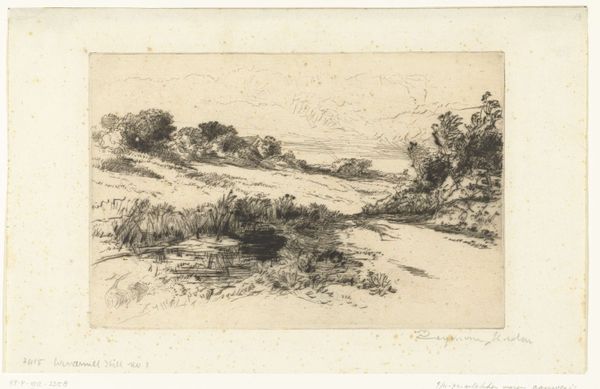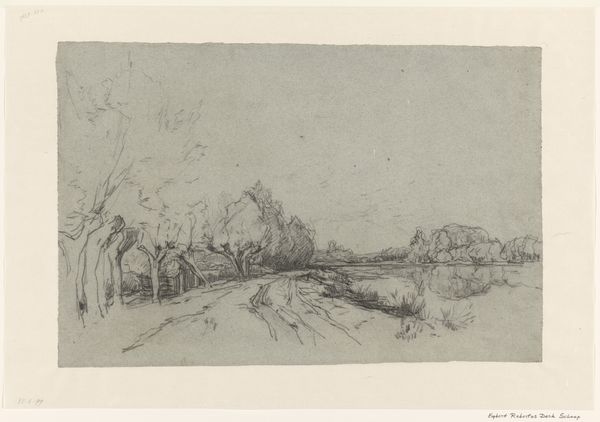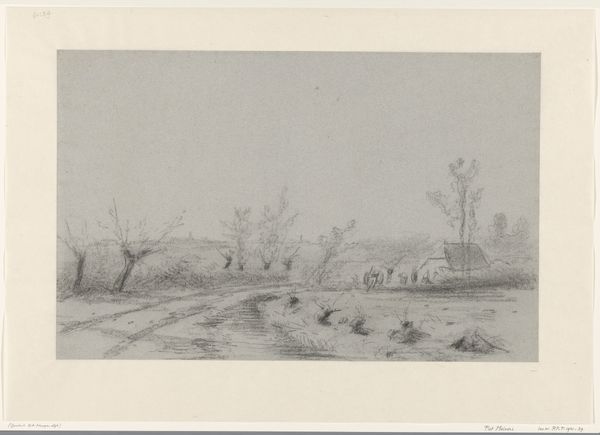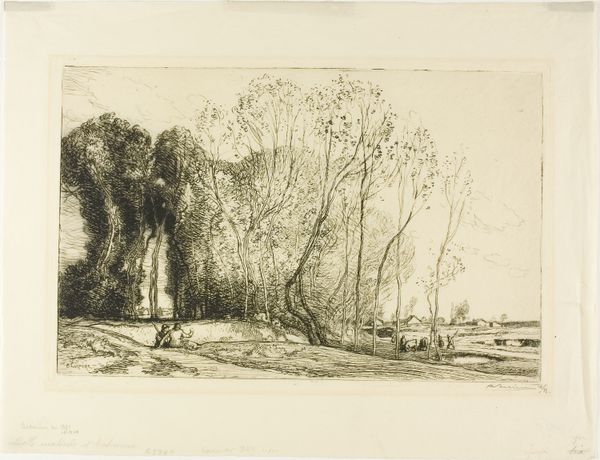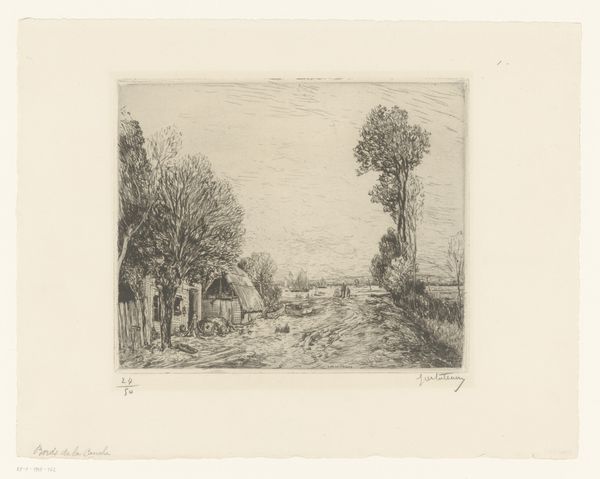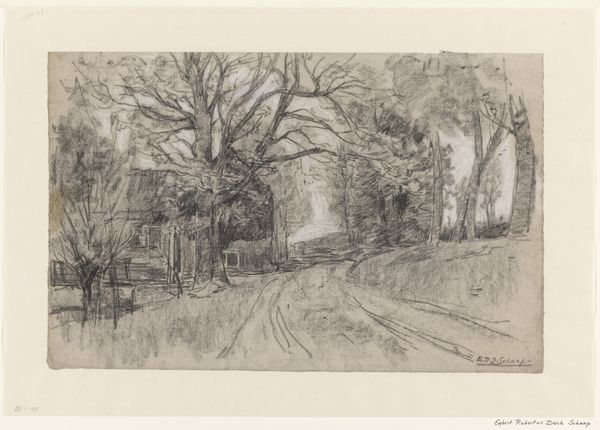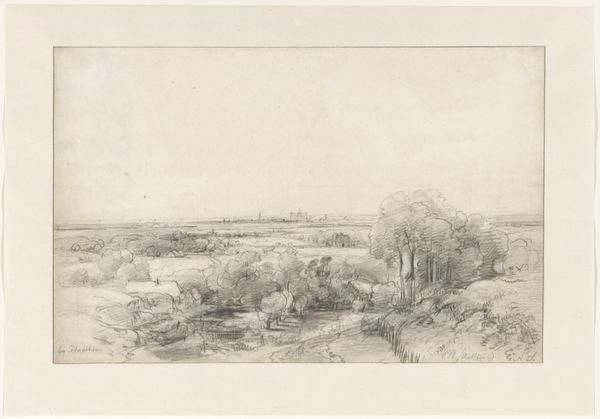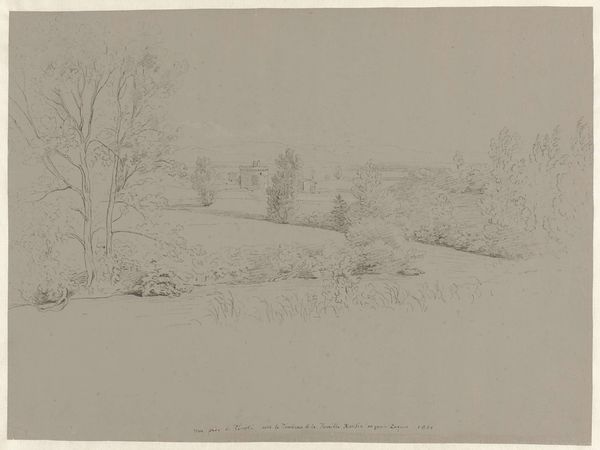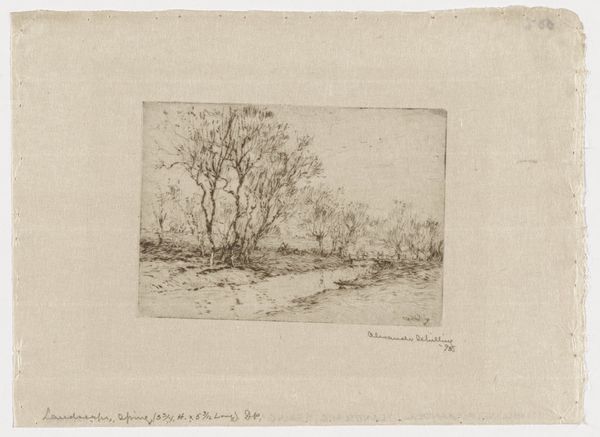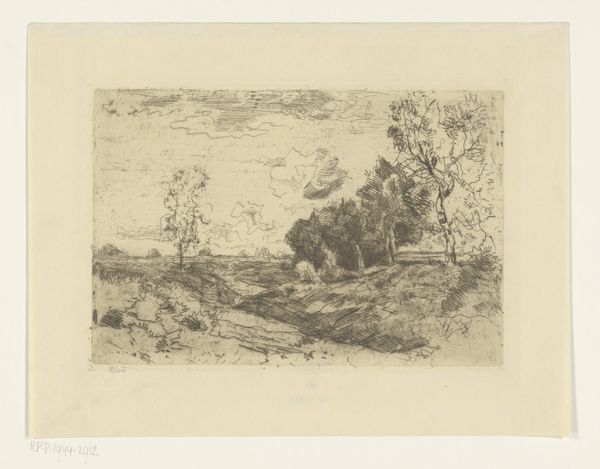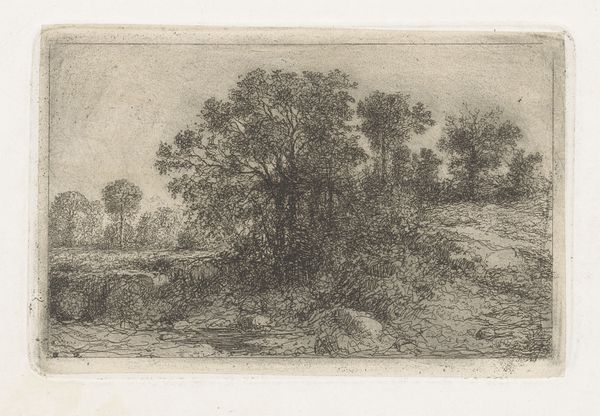
drawing, print, etching, paper, pencil, graphite
#
pencil drawn
#
drawing
#
light pencil work
#
ink paper printed
# print
#
etching
#
pencil sketch
#
landscape
#
etching
#
paper
#
pencil
#
graphite
#
pencil work
Dimensions: height 308 mm, width 472 mm
Copyright: Rijks Museum: Open Domain
Curator: So, here we have "Landschap," or "Landscape," by Egbert Rubertus Derk Schaap, likely created sometime between 1872 and 1939. It's an etching on paper, with pencil and graphite work as well. Editor: My initial feeling is... melancholic. The monochromatic tones, the almost scratchy lines. It feels raw and a little unsettling, like a memory fading at the edges. Curator: Interesting you say that. Looking at the way Schaap has employed etching, you really get a sense of the labor involved, right? The repetitive, physical act of scoring the plate, applying the ink. There's something incredibly tangible about that process. The print as an artform also allows for the production of a piece such as this, for consumption. Editor: Absolutely. You see that embodied labor in every mark. But for me, it transcends just process. Look at the composition – the stark, almost barren foreground gives way to a dense thicket of trees. There's this push and pull, a feeling of being kept at bay, maybe shut out, but also of a beautiful wild place surviving nonetheless. Curator: I think there is certainly a feeling of isolation. We do not see human presence in this Landscape. To what degree do we assume the production and consumption of images such as these allow us to process isolation in the face of burgeoning city landscapes during this period of Schaap's work? Editor: Yes, exactly. Landscape as refuge and escape. And think about who's buying these prints, these affordable multiples, as you said. Maybe these people who live in the industrial cities, maybe they long for that imagined or remembered connection with the land. It gives the print itself the ability to be an item produced through labor for a laboring class, hoping to find comfort in owning the piece. Curator: That’s very perceptive, imagining these landscapes migrating into homes, shaping our connection to nature. This discussion highlights the unique capacity of art, whether its in response to city life or through physical creation of multiples for consumers. Editor: And that simple combination of pencil, graphite and etched line. Its beauty can hide the hands involved in its own creation, so bringing that back into our thoughts is crucial to thinking about a work like this.
Comments
No comments
Be the first to comment and join the conversation on the ultimate creative platform.
